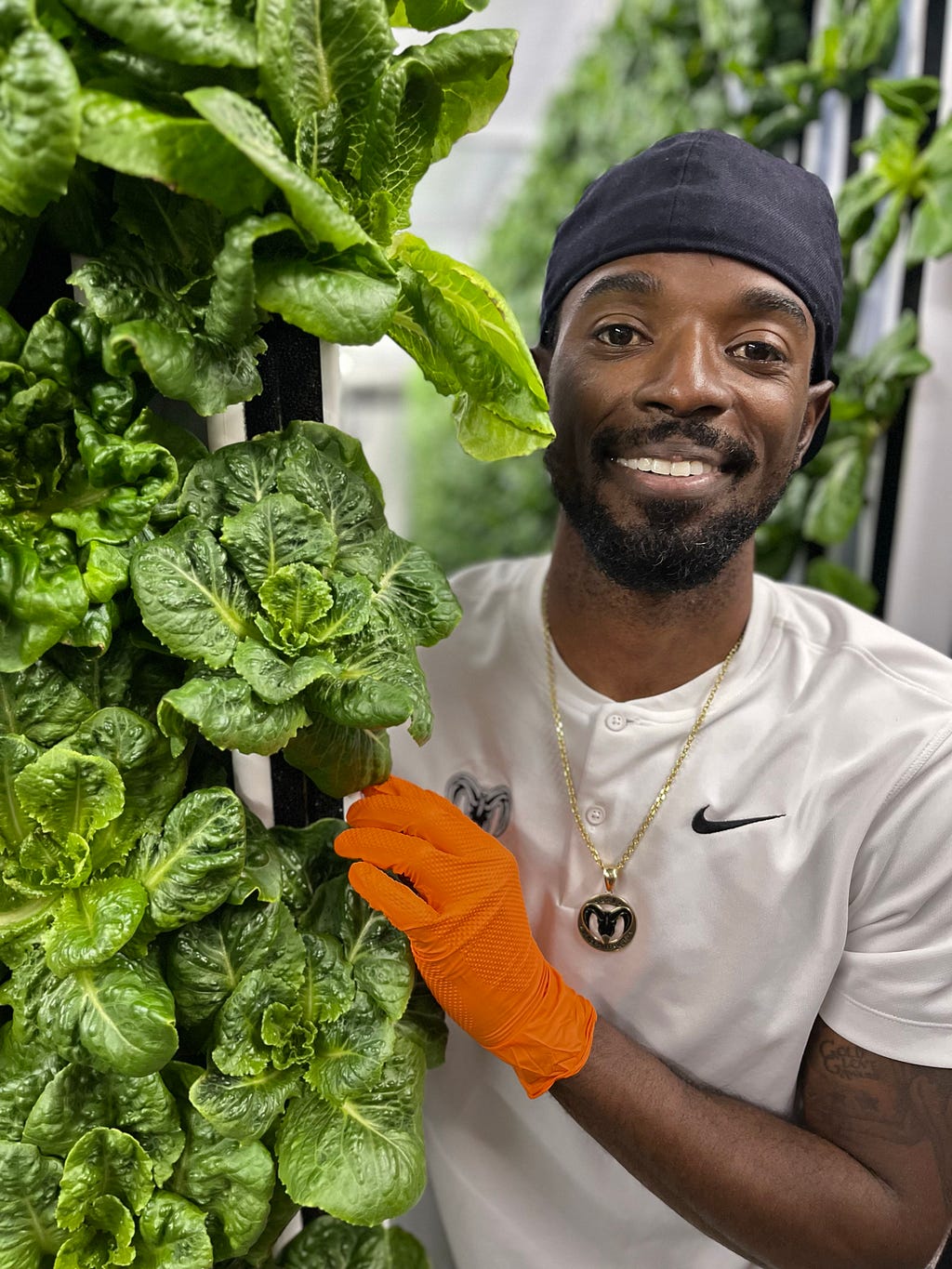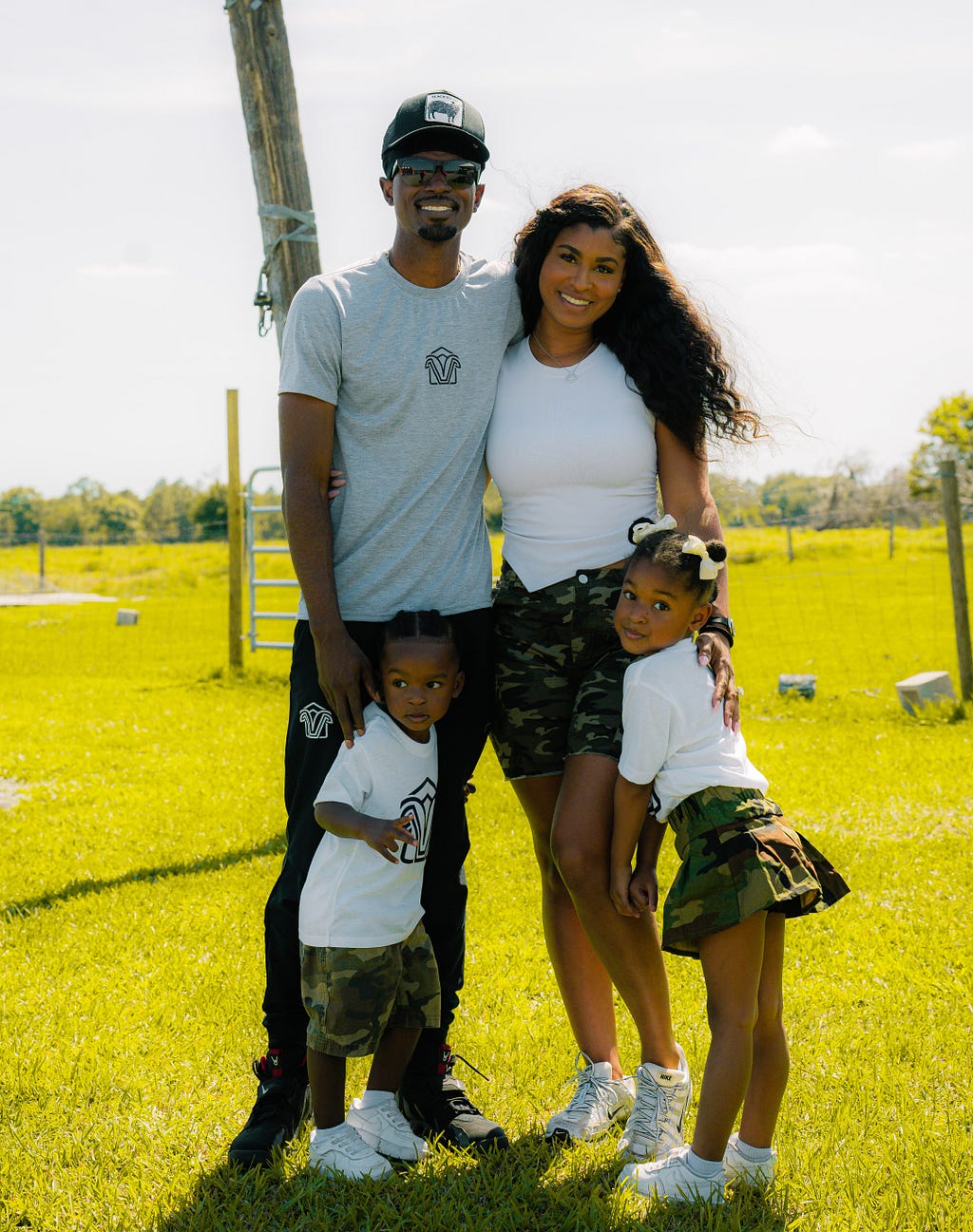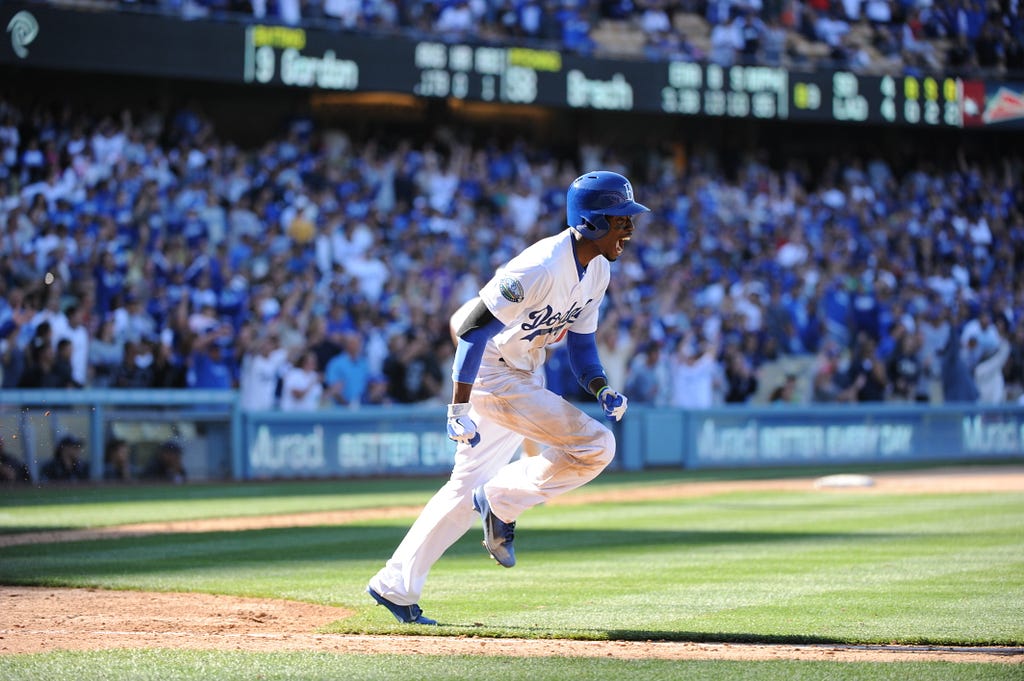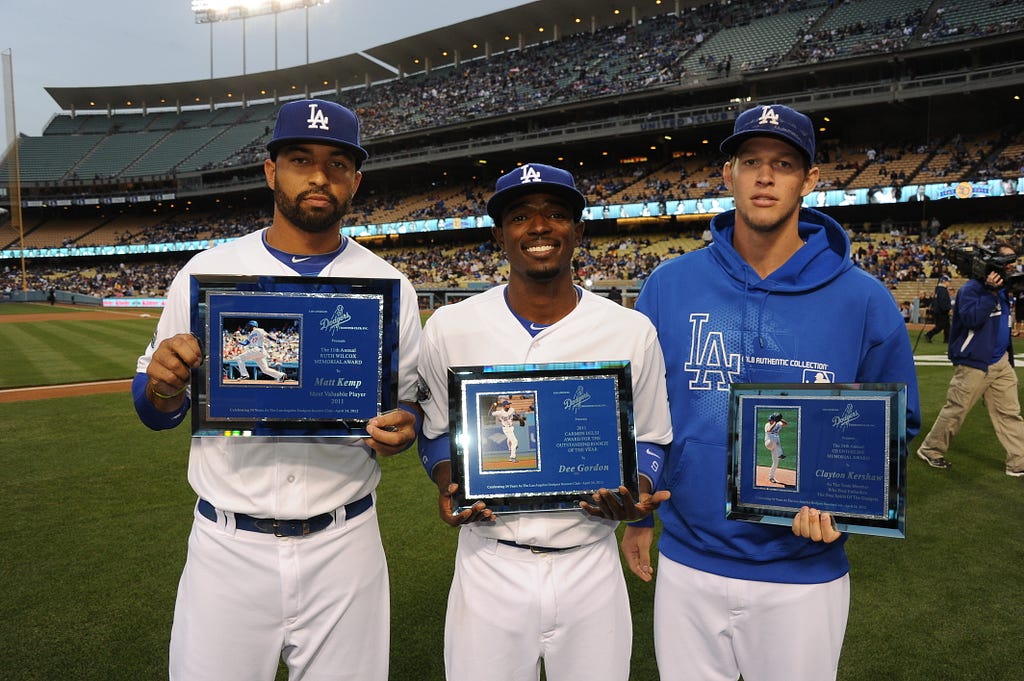
by Cary Osborne
When Dee Strange-Gordon was a Major Leaguer, even before he was a professional baseball player being scouted by the Dodgers, he considered himself different than most players.
“I’m smaller than most people, so you’re not really wanted when you’re smaller. You’re the black sheep,” Strange-Gordon says. “Kind of like the runt of the litter. But you can turn yourself into the goat — the greatest of all time with hard work and effort and discipline.”
Baseball was never the end goal for the former Dodger and 2014 Major League Baseball stolen base champion. It was a vehicle to take Dee Strange-Gordon on a circuitous route to where he is now.
Strange-Gordon, who had a quick, impactful run with the Dodgers in the early 2010s, is dedicated to becoming a GOAT in the agricultural industry.
The 37-year-old is a combination of farmer, entrepreneur and do-gooder.
His farm, business and community impact organization is called Black Sheep Farms in Fort Meade, Florida, near where he grew up in Avon Park.
His 40-acre farm utilizes hydroponic farming methods (with nutrient-enriched water and without soil) to produce leafy green vegetables. Black Sheep Farms supplies area schools, hospitals and small businesses. Strange-Gordon has dedicated his life to lifting up his community by also creating jobs and giving children opportunities in sports that they otherwise might not have.

In the latter days of Strange-Gordon’s big league career, he began to think about what was next. And he recognized there was a different calling for him.
Strange-Gordon purchased property as a big leaguer and at first turned it into a playground where he could train for baseball but also ride go-karts and four-wheelers. But having grown up in a farming community, he started to think about ways he could get into the agricultural industry.
“In baseball, I was prepared for every game. I was prepared for every situation. But when I leave this locker room, I take this shower, I am not a baseball player anymore,” Strange-Gordon says is how he approached each day. “I’m going to be a human for way longer than I’m a baseball player. So I’m going to use the human aspect of playing baseball. I’m not going to get tired of myself and lose focus of the purpose and what I’m here for.”
But the 37-year-old, who last played in the Major Leagues in 2022, was an awe-inspiring baseball player — whose birth as a professional baseball player was as a Dodger.

Strange-Gordon wanted to be a basketball player, though, and had planned on walking onto the basketball team at the University of Louisville before his family urged him to play baseball. His father Tom “Flash” Gordon pitched 21 Major League seasons and was a three-time All-Star.
Tom Gordon had told his friend and then Dodgers assistant general manager De Jon Watson about his teenage son, who was mostly unknown at the time in the industry. Tom and Watson had a friendship from their time in the Kansas City Minor League system in the late 1980s.
Dee Strange-Gordon was invited to a pre-draft workout for the Dodgers in Vero Beach in 2008.
“I just remember balling out, and thinking, ‘Oh, I’m going to go to the Dodgers,’” Strange-Gordon recalls. “Then I had a terrible workout with the Dodgers right before the draft, so I was like, ‘Oh, I’m not going to be with the Dodgers.’”
Strange-Gordon thought the Braves were going to pick him in the fourth round of the 2008 MLB Draft. The Dodgers, selecting three spots ahead of Atlanta, selected Strange-Gordon.
Strange-Gordon eventually became the Dodgers’ top Minor League prospect and was considered the shortstop of the future.
After he made his Major League debut on June 6, 2011, to much fanfare, he started the 2012 season as the starting shortstop. The objective had always been for Strange-Gordon to get on base and wreak havoc with his elite speed. But his on-base numbers were well below the Major League average and a July 4 thumb injury further set back his standing in the organization.
The Dodgers, afterward, acquired players — first Hanley Ramirez, later veteran Mark Ellis and lastly infielders Alex Guerrero and Erisbel Arruebarrena — to man the middle infield.
Strange-Gordon spent nearly the entire 2013 season in Triple-A and came into 2014 with the odds stacked against him of making the Dodgers’ season-opening trip to Australia. But he made it.
“They had a sliver of the door open. I was the last person on the plane,” Strange-Gordon laughs.
Strange-Gordon didn’t play in the first game of the two-game series in Sydney against the Diamondbacks.
He started the second game at second base.
And from there, he took off.

He was an All-Star. He hit .289 and led the Major Leagues in triples (12) and stolen bases (64). He became the first Dodger to lead the Majors in triples and stolen bases in the same season and the first to lead the National League in both categories since his baserunning mentor Maury Wills in 1962.
It was Wills who counseled Strange-Gordon on taking care of his body to withstand the swipe tags, bruises from hitting the dirt hard and getting spiked by infielders. Strange-Gordon proudly stood up to all of that.
“I was trying to deliver a blow myself,” he says. “That’s what Maury always told me — to go in hard and late.”
Strange-Gordon, though, was traded on Dec. 11, 2014 to Miami with Miguel Rojas and veteran pitcher Dan Haren for Kiké Hernández, Austin Barnes, Andrew Heaney and Chris Hatcher.
Strange-Gordon said at first, he was stunned.
“But it was supposed to happen so many times that I kind of got numb to it,” he says. “Since 2012, I was supposed to be traded. That’s like three offseasons in a row hearing your name. Even when I was in the Minors, every time the Dodgers had a trade, I was the №1 prospect, my name was thrown in.”
Strange-Gordon says the first time he heard his name in a trade rumor, he became distraught. Then Gene Clines, a former Major League outfielder who became an advisor in the Dodger player development explained to him: “There’s banks in every city.”
Strange-Gordon was an All-Star and led the Majors in steals in 2015 with the Marlins. He also won the National League batting title with a .333 average.
Strange-Gordon stole 212 bases between 2014–2017 and was a .304 hitter.
But at 5 feet, 11 inches tall, under 170 pounds, his thin frame didn’t do him favors in the eyes of the baseball industry. His profile — a hit-for-average and steal bases offensive player — would have fit perfectly into the 1960s, 70s or 80s.
Between 2021 and 2022, he played for five organizations.
He was batting .305 with the Washington Nationals through 22 games that season. But he knew he was finished with the game and asked for his release.
“Instead of putting all of that knowledge and thought into baseball or getting or getting ready to play, I (thought) I’ve got to put that toward my ideas on my farm, and that’s all I needed,” he says. “So I talked to my wife, and she said, ‘Yeah, baby, do what you got to do.’ And I quit and started Black Sheep farms.”
He hasn’t looked back.

Black Sheep’s facility, Strange-Gordon says, is aiming to create 50 full-time jobs and boost the median family income for his workers. Strange-Gordon says the median family income in the area is $29,000.
Layered on top of the farming is sports. The Black Sheep name is also on youth baseball and basketball teams.
The vision is to give kids whose parents work at the farm the opportunity to play high-level sports and not have to pay high-level prices to play.
Strange-Gordon’s name recognition gives Black Sheep visibility. But he wants it to be greater and grow, and thus he welcomes the support of others to grow it and create more opportunities for his community.
Why do all this?
“Because that’s where I’m from,” he says. “That’s what I’ve made it out of. And I believe that my mission wasn’t to play baseball. I was supposed to play basketball. So if I played baseball and made this money, then I must be here to do something bigger than just baseball.”
Catching Up: Dee Strange-Gordon has visions of becoming a GOAT was originally published in Dodger Insider on Medium, where people are continuing the conversation by highlighting and responding to this story.